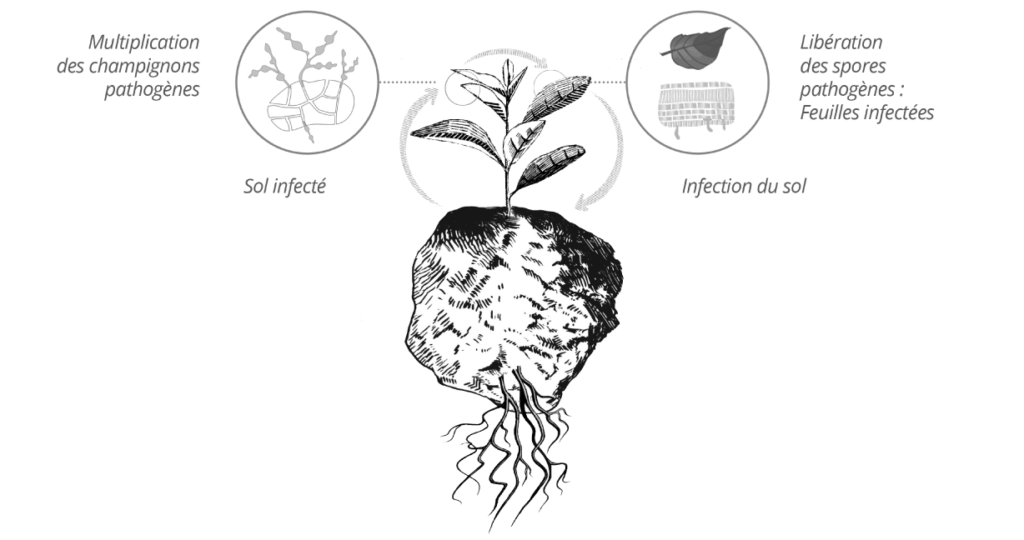Reduce diseases through biological control in its soils
Biological control consists of using living organisms or their components (pheromones, toxins, elicitors, extracellular enzymes, etc.) to suppress or, failing that, control populations of harmful organisms. In agricultural production systems, pathogenic species multiply, sometimes without limit when they no longer encounter their natural enemies present in the environment. It is the theory of ecological weakening that appears as soils become biologically tired.
The law of nature provides that every living organism, from the smallest to the largest, will at some point find itself the target of one or more predators to maintain a correct, diverse and autonomous functioning equilibrium. This is what happens, for example, in forest soils where pathogens are naturally regulated without human intervention on this ecosystem. Unfortunately, this ideal conservation scheme for natural predators is difficult to reproduce on a farm where humans must interfere with the environment to produce and feed human populations.
Biological control therefore makes it possible to use the enemies of harmful species to regulate the population. If pathogens are not accompanied by their natural predators, they can adapt to their new environment and colonize it very aggressively. The worst examples are that of the vine phylloxera that arrived from North America in 1861 and the Colorado beetle that arrived from Canada at the end of the 19th century. The protection that can be provided by the use of a biological control agent is the result of careful research into the existing balance of power between predators and parasite. Knowing the modes of action requires understanding the interactions between the different living organisms present in a natural environment. The most common modes of action are competition for food, oxygen, and space. It is recommended for each farmer to improve his means of control through conservation.
These are all methods that increase the populations of beneficial organisms, by modifying the environment or agricultural practices. This is for example the case with the establishment of hedges, relay plants sheltering biological control agents or the application of practices related to soil conservation. We strongly recommend soil conservation practices to control plant diseases because almost all pathogenic fungi present on plants come primarily from the soil. Conserving your soil through good practices helps it to develop beneficial fungi in competition with pathogens for the occupation of space in the soil.

It is then a question of breaking this cycle by favoring the appearance of beneficial fungi in the soil to the detriment of pathogens, vectors of many diseases such as foot rot, fusarium or sclerotinia.

